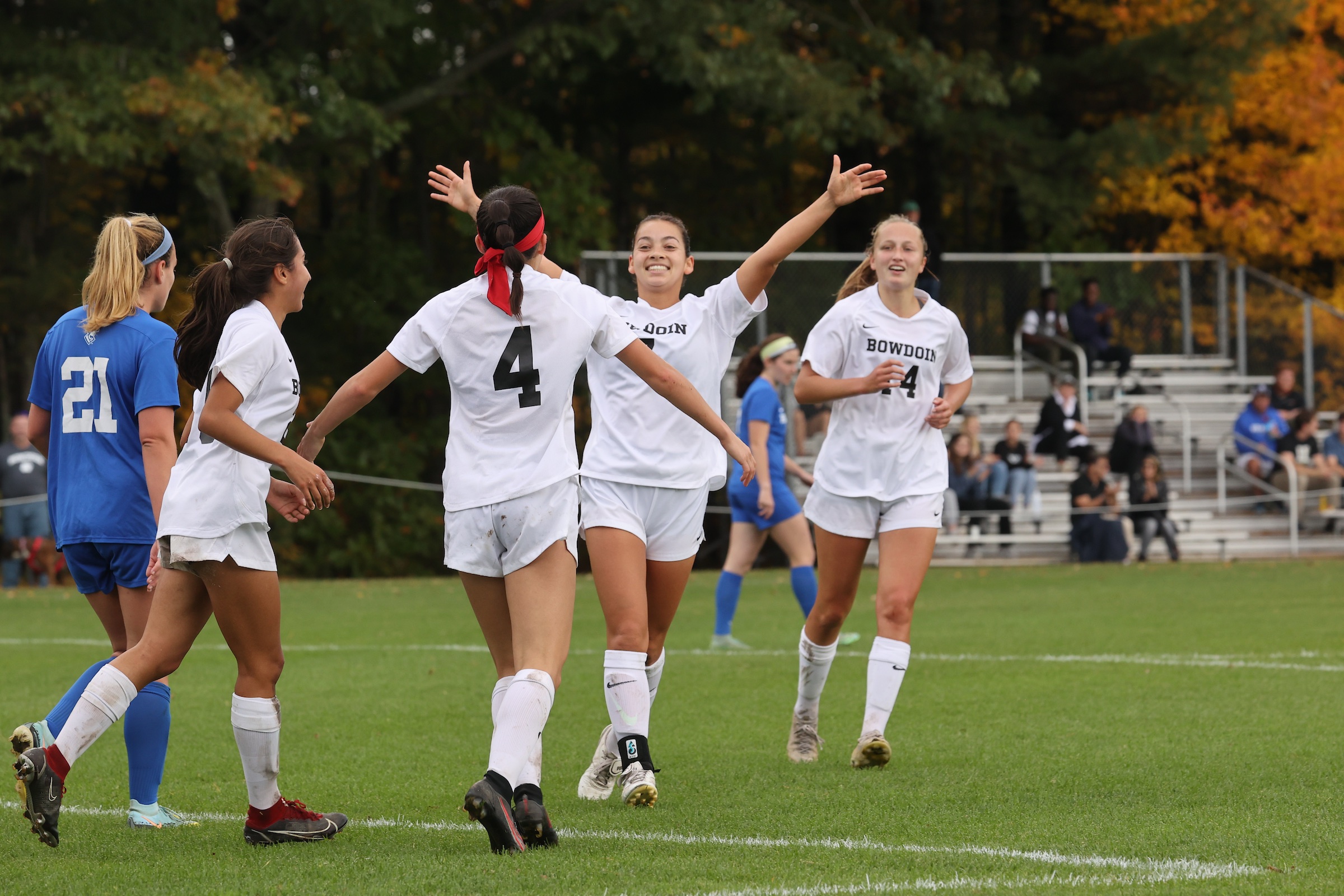Unlocking the 4-3-3: Three Whistles
December 2, 2022
 Courtesy of Brian Beard
Courtesy of Brian BeardTwo whistles mark halftime; three mark full time. And, with the sun fully set on the women’s soccer season, I can finally get something off my chest: Bowdoin’s women’s soccer team doesn’t actually play a 4–3–3. In fact, they switched to a 4–4–2 diamond midfield about halfway through the season. Whereas this change of shape made the name of my column comically outdated, the tactical willingness to make such a change is impressive.
In the second edition of this column, I wrote the following:
“Any decent coach can pigeonhole players into an already existing system. A good coach can have impressive tactics and stick with them no matter the players on the team or the opponent. But a great coach can build a system designed around their players that not only complements their skill sets but allows each individual to perform at the highest level.”
Once again, Bowdoin proved it falls into that third sphere. Obviously, the goal of any member of the women’s soccer program is to win, but winning without maximizing player potential is a daunting, if not impossible, task. At the time of writing that excerpt, the Polar Bears were winless in their last two matches. It was October 14. Bowdoin sat at 6–3 and needed crucial wins against looming NESCAC opponents if they wanted any chance of a home playoff match. It was about this time, however, where the change in shape occurred. After experimenting with a diamond midfield for a couple of halves earlier in the year, Bowdoin moved to a full-time 4–4–2 and won three of their four final matches.
This change resulted in a number of things. Firstly, it spread out the Bowdoin midfield, thus gifting everyone within it much more space than normally allowed to them in a more compact three-player midfield. For example, players like Stephanie Christianson ’26, a technically gifted true Number 10, and Rachael Peacock ’23 were able to thrive in this new shape. Christianson, specifically, found the often-vacated space directly behind Bowdoin’s two central forwards, and Peacock was able to play as an almost inverted midfielder who drifted either centrally or into the wide spaces depending on the flow of the game. Lastly, by pairing Samaya Bernardo ’24 with Morgan Smiley ’24 up top, Bowdoin was able to step onto the pitch with one of the most lethal striker pairings in the NESCAC.
All this being said, I could go on and on about the benefits and drawbacks of a 4–3–3 compared to a 4–4–2, but I’m not going to. Instead, I want to make one final point before wrapping up the column for this semester.
I love tactics. Admittingly, I probably overvalue them, but I remain relentlessly interested in a manager’s unique tactical decisions regardless—hence, why I have been writing this column. But tactics can only take talent so far. Anyone watching the World Cup this year has probably noticed the uncharacteristic number of upsets in the group-stage. From America’s draw against England to the Moroccan magic all group-stage, these less-talented teams are not succeeding because they have superior tactics. They are succeeding because they play with more heart, more passion and more love for one another. These teams are built on the backs of strong relationships from player to player, something that directly translates to success on the pitch.
When I spoke to captain Shannon Gallagher ’22 at the end of the season, I asked her what her biggest takeaway was from her time on the soccer team. Her answer emphasized the importance of building these tight-knit relationships, these very same relationships that allowed Bowdoin to surprise a lot of people over the last couple of months. All-American midfielder Greta Farkas ’24 echoed similar thoughts, and the ability to sustain such personal connections with teammates is what allowed this team to reach the heights it did this year.
This women’s soccer season could not have ended in a more painful way with two successive losses in penalty shootouts. However, the players would be doing themselves a disservice if they didn’t embrace what they have built at Pickard Field. The changes from last year to this year are substantial, and the improvements go far beyond that. In Gallagher’s half-decade with the program, she never played a NESCAC home playoff game or received a bid for the NCAA tournament. This year, she accomplished both. There is so much this team has to be proud of and even more they have to look forward to.
This season has been incredible to follow—both as a fan and a writer, and, if you have any questions as to how much this has meant to me, give last week’s column a read. If anyone reading this has a more updated column name, don’t be a stranger. Until then, enjoy the World Cup.

Comments
Before submitting a comment, please review our comment policy. Some key points from the policy: